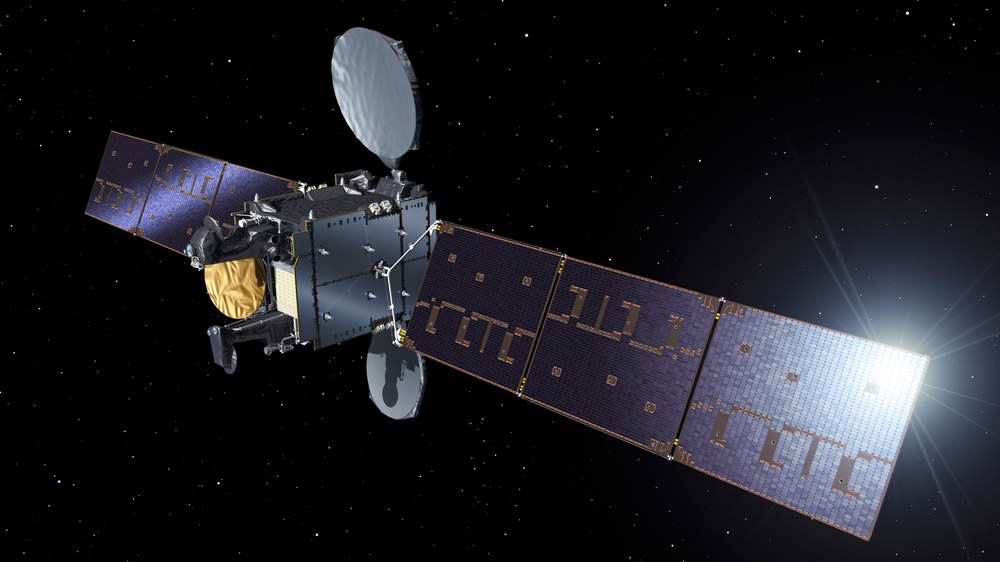SmallGEO
The name ‘SmallGEO' is an understatement, as the satellite measures 3.7 x 1.9 x 2 metres and weighs around three tonnes. However, the 'small' is a direct comparison with other geostationary satellites, which can weigh more than six tonnes.
The first SmallGEO mission, Hispasat 36W-1, is designed to cover communication services for mainland Europe, the Canary Islands and South America. Part of the payload is the first demonstration of a new development under the DLR ‘Ka-Band Demonstrator’ programme. This is a communications unit with a very large frequency spectrum.
This transmitter includes a controllable payload unit and a flexible power amplifier. Both technologies are being tested in space with the aim of making satellite communications much more flexible while using fewer resources. This flexibility enables a satellite operator to react quickly to current customer requirements.
SmallGEO – a long-term investment
For EDRS-C, the follow-up mission to Hispasat 36W-1, the SmallGEO platform was expanded to include a purely chemically propelled variant. EDRS-C is part of the European Data Relay System EDRS – a data highway in space that began operations in 2016 with its first satellite EDRS-A.
Subsequently, a national mission based on SmallGEO was realised for the first time with Heinrich Hertz. The communications satellite will test new satellite communication technologies for their suitability for use in space. Some 20 experiments on communications, antenna and satellite technology will also be carried out with the Heinrich Hertz satellite.
Europe-wide partnerships and a strong supplier base in Germany
The SmallGEO project is being carried out as part of an international cooperation. Twelve ESA member states are involved. Spain, Sweden, Switzerland and Italy are the most important players alongside Germany. SmallGEO was developed and built by Bremen-based space technology company OHB System. The satellite tests were carried out at IABG and Airbus DS in Ottobrunn. During the first test phase in space, the satellite was operated by the DLR German Space Operations Center (GSOC) in Oberpfaffenhofen.


